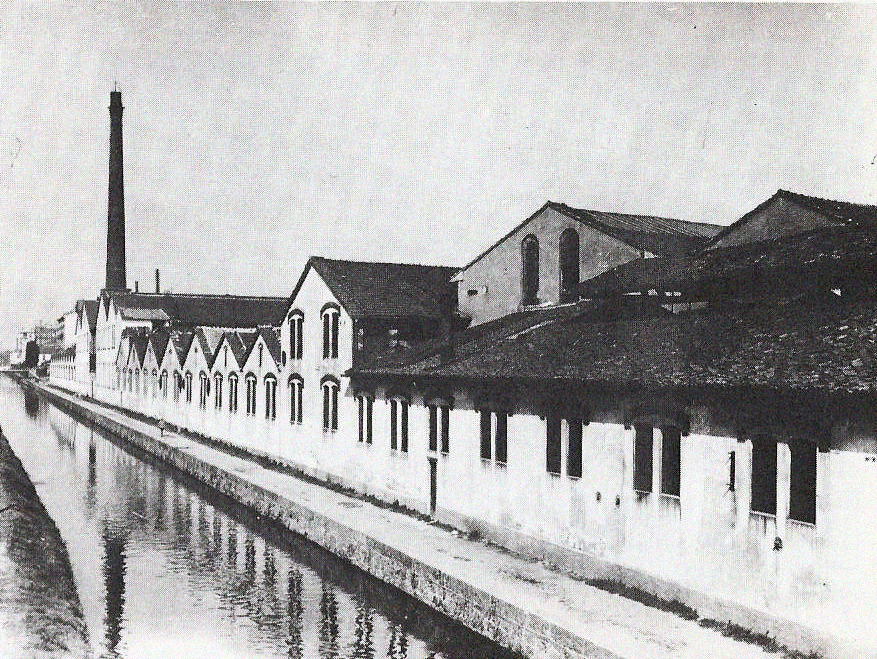Once a zone of gardens and vegetable patches connected to churches and monasteries owned by the Franciscans of Santa Maria degli Angeli and the order of the Fatebenefratelli (Brothers Hospitallers of St. John of God), in the first half of the 1800s Porta Nuova became a strategic area for the growth of the industrial city. The abundance of water flowing from the north through the Martesana canal (whose banks can still be seen on Via San Marco) and the construction of the first Milanese railway station (1840), at Via Monte Grappa 12, attracted some of the factories that would make the history of 19th-century Milan. Precisely here, just beyond the city walls, the plants of Grondona and Elvetica (later Breda) were built, along with the rubber factory of Giovanni Battista Pirelli. Housing and services for the new population of workers soon became an urgent issue, to which the city administration responded by building the first working-class housing complex (between the streets San Fermo, San Marco, Moscova and Montebello) and a series of assistance facilities, such as the building of the “Opera Pia delle Cucine Economiche” (at Via Monte Grappa 8) by the architect Luigi Broggi (1883), around which the new identity of the district took form.
A productive motor of the city from the early years of the 20th century onward, the Porta Nuova area took on a central role not only in the economy, but also in Milanese cultural life. The year 1886 saw the opening, on the new Via Principe Umberto (now Via Turati), of the Palazzo della Permanente, built by the architect Luca Beltrami and renovated after World War II by Pier Giacomo and Achille Castiglioni with the collaboration of Luigi Fratino.
Given its proximity to the Central Station (moved in the 1930s from the present Piazza della Repubblica to Piazza Duca D’Aosta) and the Garibaldi Station, the area was impacted by major economic investment for the insertion of offices for the service industries. In the period after World War II the outermost part, between Piazza della Repubblica and Porta Garibaldi, was set aside for a new administrative center, whose process of definition – marked by a number of ideas competitions on a national and international level – has only recently been completed, with the Porta Nuova project.
Among the most important works of architecture of the area in the period in which the Castiglioni brothers and Ernesto Treccani lived and worked here:
Palazzo per l’Esposizione Permanente delle Belle Arti (1878 – 1885)
Via Turati, 34
Design: Luca Beltrami
Project for reconstruction of the interior and the upper volume (1952 – 53): Achille and Pier Giacomo Castiglioni, Luigi Fratino
Headquarters of Il Corriere della Sera (1903 – 1904)
Via Solferino, 26-28
Design: Luca Beltrami, Luigi Repossi
Addition (1960 – 1965) on Via Moscova and Via San Marco: Alberto Rosselli
Renovation (1989-2006), Via Solferino 26-28 and Via San Marco: Vittorio Gregotti
Ca’ Brutta (1919 – 1923)
Via della Moscova, 12-14
Design: Giovanni Muzio, Pier Fausto Barelli, Vittorino Colonnese
Primo Palazzo Montecatini (1935 – 1938)
Via della Moscova, 3 – Largo Donegani, 2
Design: Giò Ponti, Antonio Fornaroli, Eugenio Soncini


